Is Your Intuition Wrong? A Deep Dive into Newton’s Third Law (with Mind-Twisting Examples!)
I’m Ken Kuwako, a science trainer. Every day is an experiment.
The Law of Action and Reaction: A Sumo Showdown Between an Elephant and a Gorilla!
Today, I want to pose a little “force” quiz. Imagine this: a massive elephant and a powerful gorilla face off in a sumo match. They collide with a “THUD!”, and the elephant pushes the gorilla back. Picture that scene in your mind.
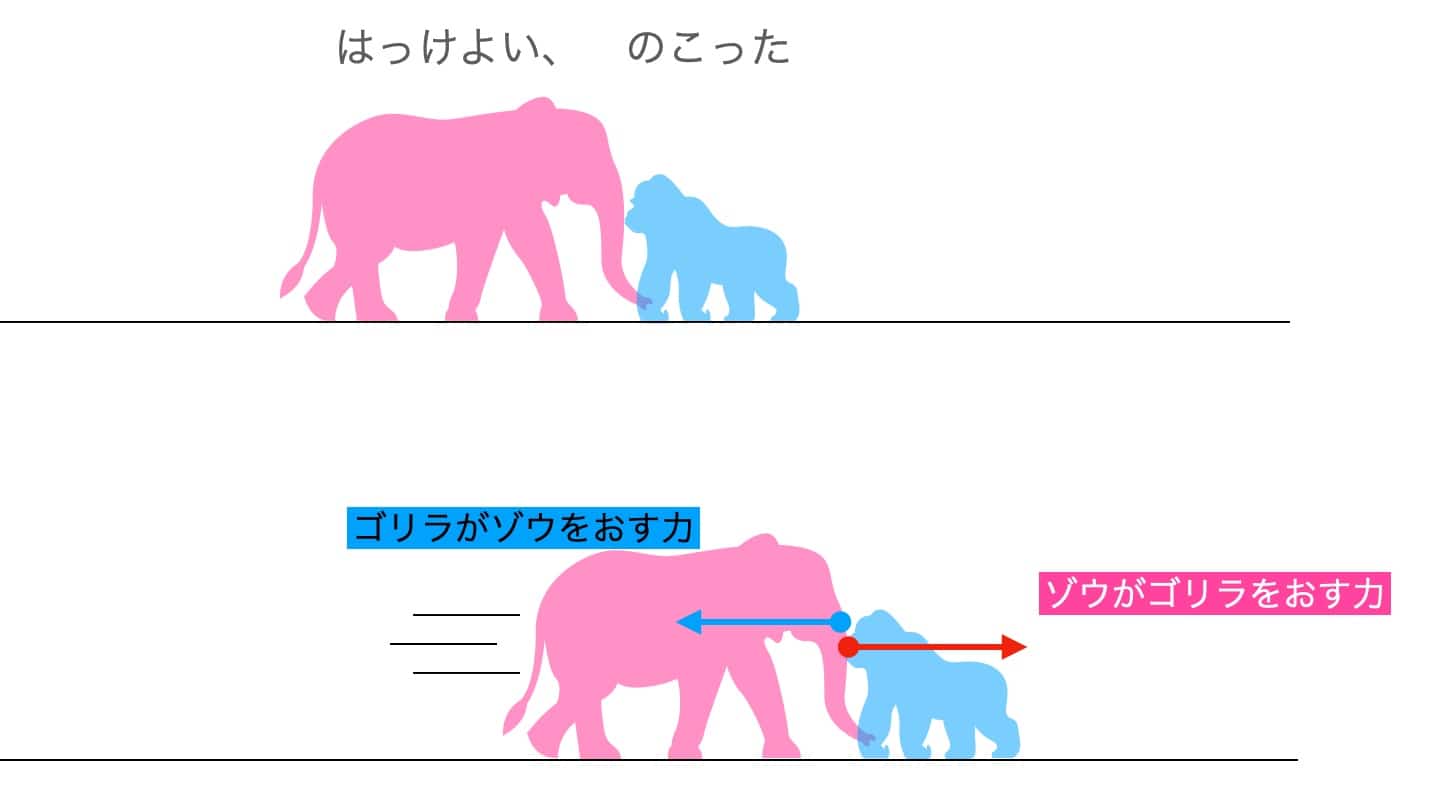
At this moment, which force is greater: the force the elephant exerts on the gorilla, or the force the gorilla exerts back on the elephant?
“Well, obviously the elephant is stronger, so the force it pushes with must be bigger, right?”
That’s the intuitive answer for many people, but wait! There’s a fascinating pitfall of physics hiding here that we often miss in our daily lives and that many people confuse. And that’s the topic for today: the Law of Action and Reaction.
What is the “Law of Action and Reaction”?
The surprising conclusion is that the force the elephant exerts on the gorilla and the force the gorilla exerts back on the elephant are always the exact same size!
Surprised? This is what’s known as Newton’s Third Law, or the Law of Action and Reaction.
The law is defined as follows:
“For every action, there is an equal and opposite reaction. When object A exerts a force on object B, object B exerts a force on object A that is equal in magnitude and opposite in direction.”
Simply put, if you push something, it pushes back. If you pull something, it pulls back. When you push on a wall, the wall pushes back on you. And when the Earth’s gravity pulls on you, you’re pulling on the Earth with the exact same force (though with its immense mass, the Earth doesn’t budge!).
Let’s go back to our sumo match. The elephant applies a force as an “action” on the gorilla, and the gorilla applies an “equal and opposite reaction” force on the elephant.
So then why does the elephant move forward and the gorilla get pushed back?
“But wait, if the forces are equal, shouldn’t they both just stay still? The elephant actually moves forward and the gorilla gets pushed back, right?”
That’s an excellent question! This is where many people get confused, mixing up the Law of Action and Reaction with the equilibrium of forces.
- The Law of Action and Reaction describes a “pair of forces” acting between two different objects. The force from the elephant on the gorilla and the force from the gorilla on the elephant are a pair of action-reaction forces.
- The equilibrium of forces refers to a state where multiple forces acting on a single object cancel each other out, and the object’s state of motion doesn’t change (it’s either at rest or moving at a constant velocity).
The reason the elephant moves forward is that the force acting on the elephant—the frictional force between the ground and the elephant’s feet—is greater than the force it receives from the gorilla. The elephant, with its large body and feet, can push strongly against the ground to generate a large frictional force, which allows it to overcome the reaction force from the gorilla and move forward.
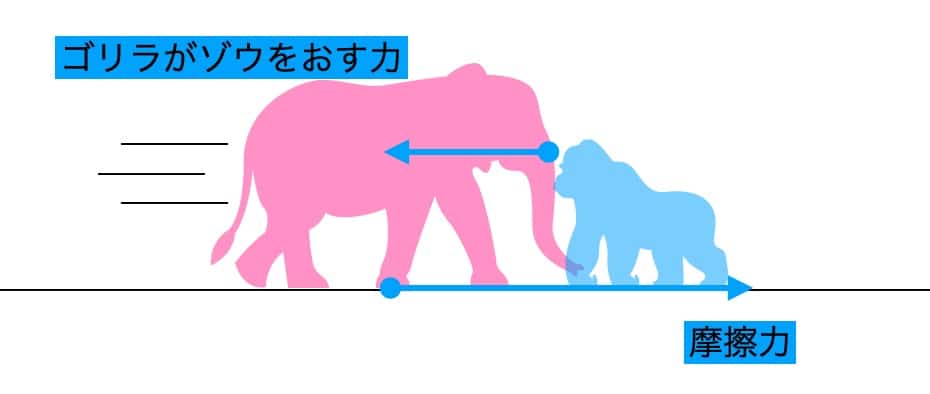
On the other hand, the gorilla is pushed backward because the frictional force between the ground and the gorilla’s feet is less than the force it receives from the elephant. The gorilla’s own friction isn’t enough to withstand the push from the elephant, so it gets pushed back as a result.
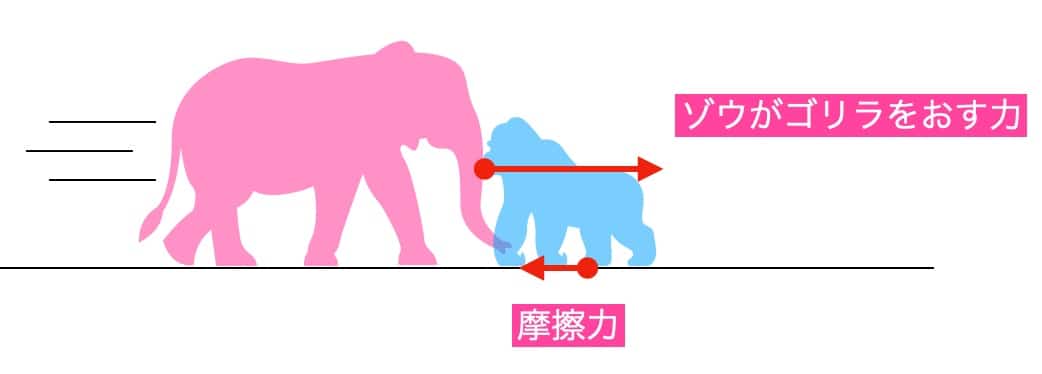
Action and Reaction in Everyday Life
The Law of Action and Reaction is all around us.
- Rocket Propulsion: The “action” of a rocket expelling hot gas backward generates a “reaction” force that pushes the rocket forward.
- Walking: The “action” of pushing the ground backward with your foot creates a “reaction” force from the ground that pushes you forward.
- Firing a Gun: The “action” of a gun firing a bullet forward creates a “reaction” force that causes the gun to recoil backward.
Pretty cool, right? It’s exciting to see how many physical laws are hidden in such ordinary, everyday phenomena.
The elephant and gorilla sumo problem is a great way to understand the concepts of the Law of Action and Reaction and the equilibrium of forces, which are fundamental yet profound in physics. I hope you’ll use what you’ve learned today to take a closer look at the “forces” at work around you!
By the way, this exact type of question has appeared on Japan’s university entrance exams.
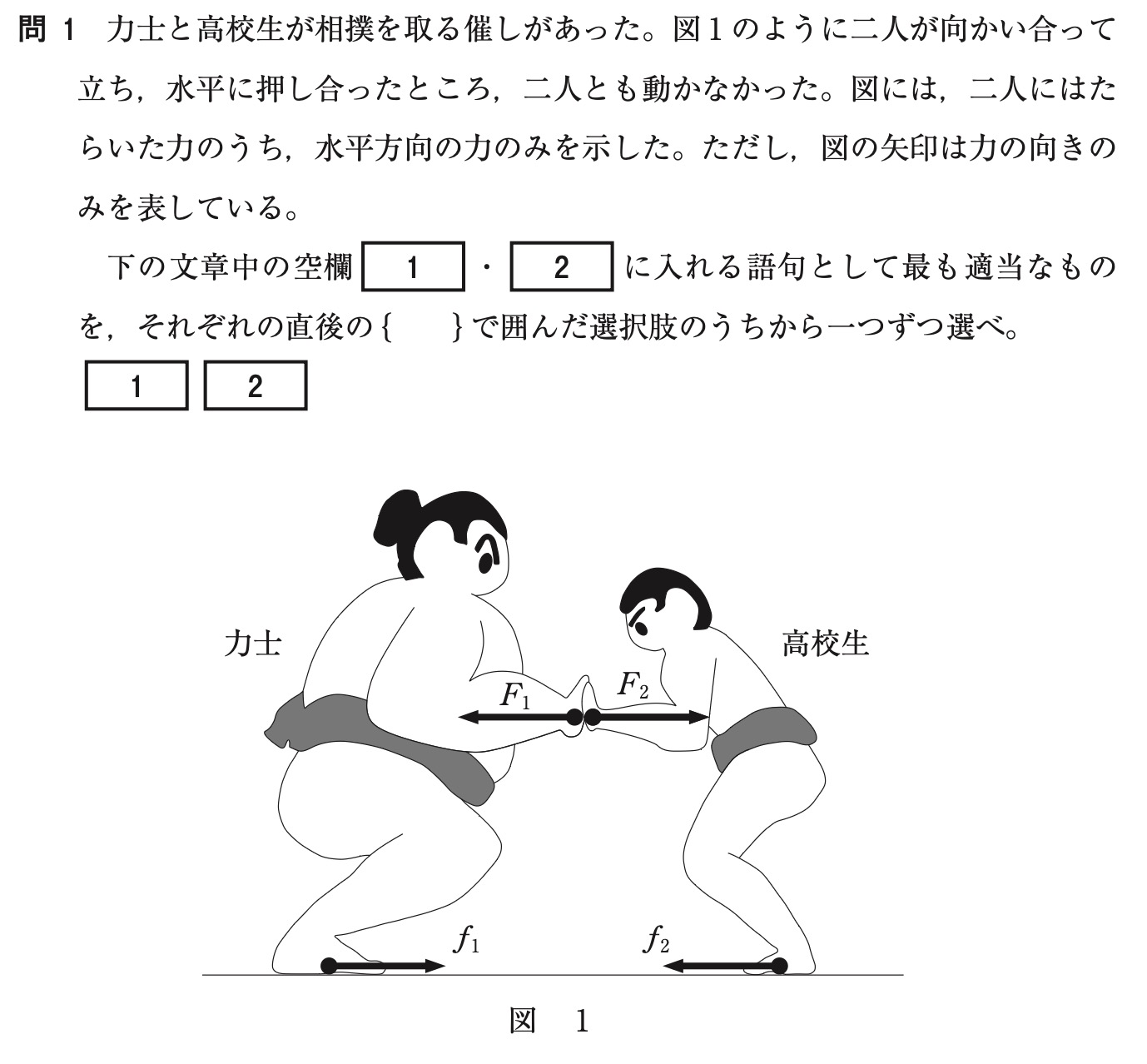
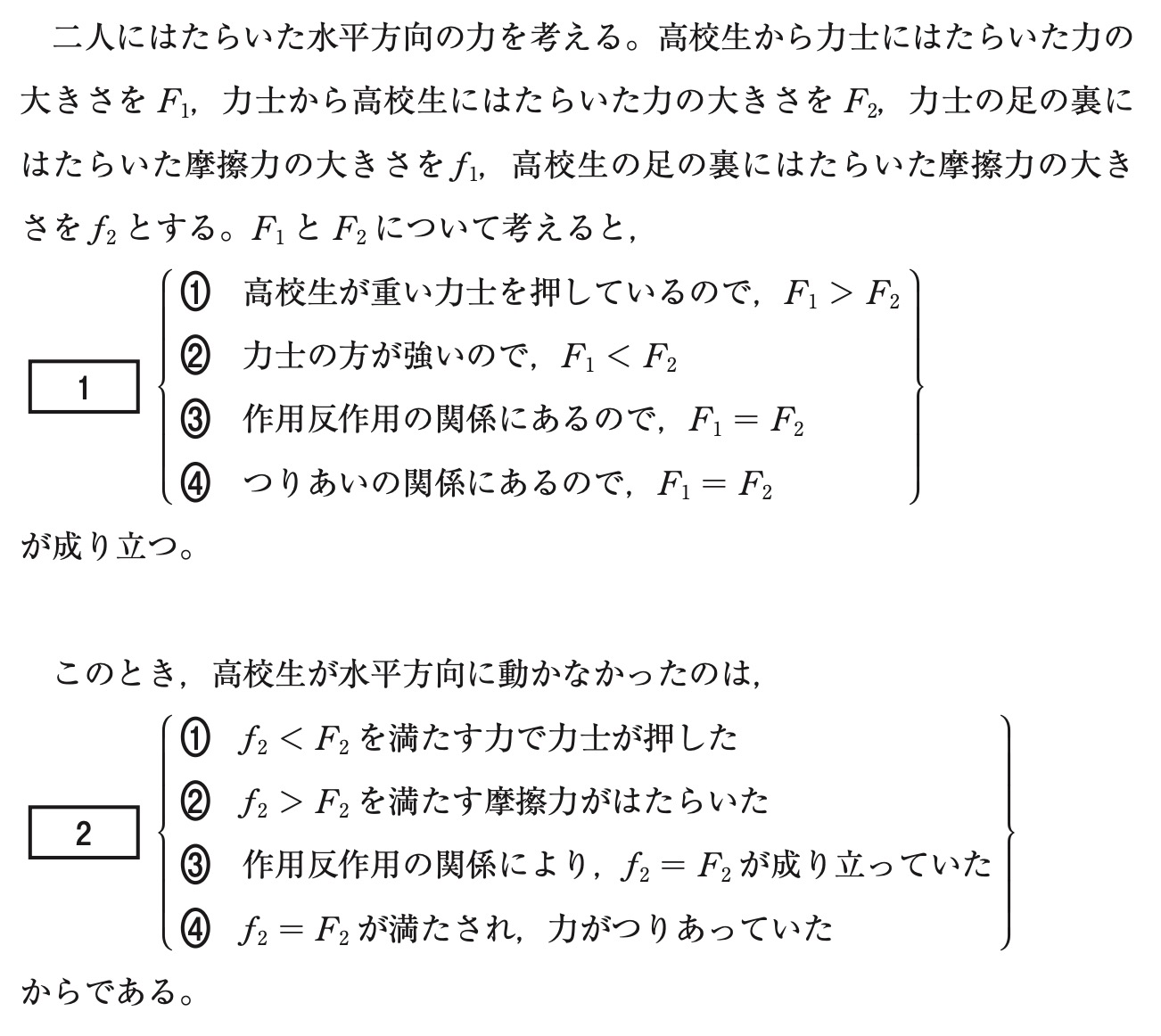
Contact and Requests
Want to get closer to the wonders and fun of science? We’ve compiled easy-to-understand tips and fun science experiments you can do at home. Feel free to search around!
・Learn about the creator, Ken Kuwako, here.
・For all requests (writing, lectures, science classes, TV supervision, appearances, etc.), please click here.
・Get updates on new articles on X!


